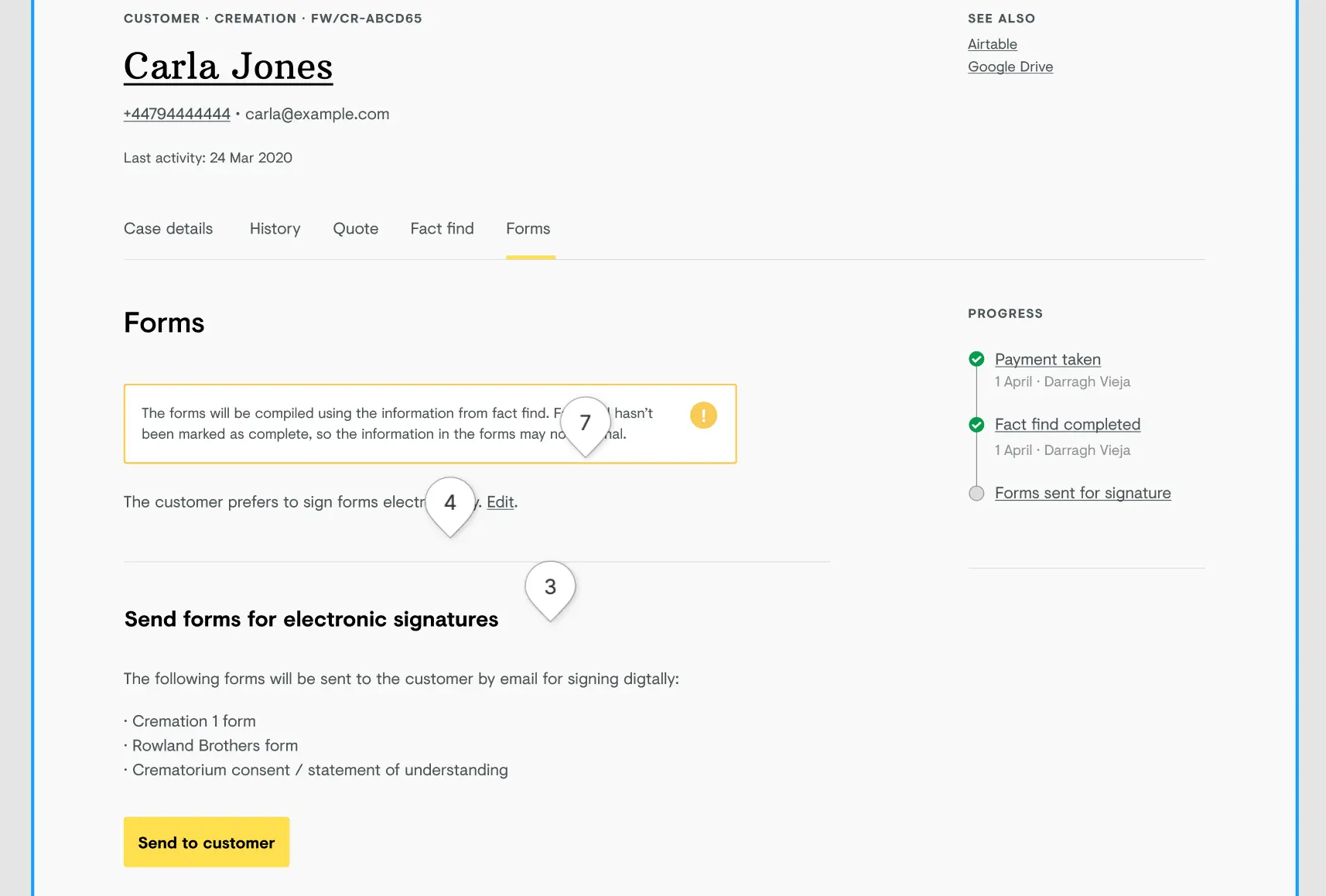Problem
Farewill’s Cremation team dealt with a big increase in cases in spring 2020. The team was stretched, which meant more stress, pressure and challenges communicating with customers and partners.
The Dealing With Death product team was tasked with identifying the pain points in our cremation operations, and helping to address them.
Project
The project started with discovery research and service mapping. How did we actually help our cremation customers and process cases, and what were the big sticking points?
We identified that sending the various cremation forms to customers was a good starting-point, and the project narrowed in on solving that problem.
Team
Me – sole product designer, working as part of an in-house cross-functional product team including: PM (James), engineers (primarily Gavin and Jacob), plus various users and stakeholders.
Process
I ran a number of observation sessions with our cremation operations team. They were so generous with their time! They were happy for me to watch them go about their work, and to spend time answering my questions about their process.

My goal from the sessions was to map out how we run our cremation service, to help us identify pain points to solve. I created a service blueprint which outlined how we move cremation cases from stage to stage and team to team, with various dependencies and touchpoints en route.

Using the service blueprint, the product team collaborated to group pain points and agree a top priority. After jotting down different ideas and considering the impact vs effort, we made a decision – we’d tackle the process for sending forms to the customer to sign. That’s the dotted red oval in the screenshot above.
I wrote a detailed kick-off doc which was shared around openly for discussion. The doc outlined the problems and user needs, the current process and a suggestion for v1.

Separately, the engineers investigated options for e-signatures – a significant part of the project was enabling customers to sign forms digitally.
I began to consider the UI, creating high fidelity mockups. Gavin and Jacob contributed too – the UI was very much a joint effort.

The UI aspect of this project was fairly lightweight – the bulk of the effort was our upfront discovery and the amazing work from Gavin and Jacob to get e-signatures working.
Outcomes
The project introduced a totally new process for our cremation teams, allowing them to submit forms for e-signature by customers.


Incredibly, the project saved the team hours every day, which meant they could not only process more cases, faster, but also communicate more effectively with customers.
We can now add three or four new customers in the time it took to add a single customer, the form generation saves hours every day!
…a quote from Cat, a cremation ops team member
Reflections
- This project involved very little UI design – the bulk of my impact as a designer was to map out the service and articulate process and needs, so the rest of the team had clear context
- What UI there was, was a collaborative effort between me and the developers – in fact, I’m pretty sure it was 80% Gavin and Jacob’s designs that we used in the end. Anyone in the team can have great ideas, and part of my job is facilitating that – the important thing is the outcome.
- This was a real headache to build – the work by Gavin in particular to get this off the ground, in spite of some awful Hellosign headaches, was incredible. The end result looks so simple, but to get there was anything but.